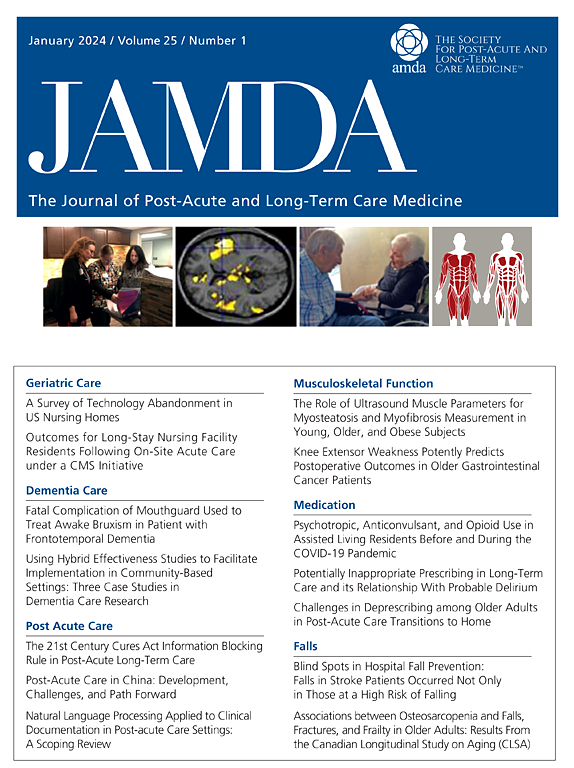Racial and Ethnic Disparities in Accessing High-Quality Home Health Care among Older Adults with and Without Dementia
IF 4.2
2区 医学
Q2 GERIATRICS & GERONTOLOGY
Journal of the American Medical Directors Association
Pub Date : 2025-03-21
DOI:10.1016/j.jamda.2025.105539
引用次数: 0
Abstract
Objectives
Home health care (HHC) plays a pivotal role in serving millions of US adults aging in place. Although the HHC population is growing rapidly in both size and diversity, driven by an aging US population and a changing demographic profile, there are increasing concerns of equity in HHC, particularly regarding how vulnerable populations are affected under current HHC practices. The purpose of this study was to examine the variations in accessing high-quality HHC in racial and ethnic minority groups and persons living with dementia.
Design
Cross-sectional, secondary analysis.
Setting and Participants
Older adults who received HHC in 2016 from agencies with a star rating of overall care quality from the Home Health Compare program.
Methods
Start of care data from the 2016 HHC Outcome and Assessment Information Set was linked to Master Beneficiary Summary File, Home Health Compare, and Provider of Services file to address the aim. Multinomial regressions were used in analysis when risk-adjusting for individual and agency characteristics.
Results
Our risk-adjusted estimates, based on data from 574,682 older adults aged ≥65 years served by 8634 HHC agencies nationwide (2290 offering high-quality care, 4023 providing moderate-quality care, and 2321 delivering low-quality care), revealed significant disparities. Non-Hispanic Blacks (relative risk ratio, 0.62; 95% CI, 0.61–0.64) and Hispanics (relative risk ratio, 0.72; 95% CI, 0.70–0.74) were significantly less likely to receive care from high-quality agencies. Additionally, having dementia exacerbated disparities in accessing high-quality HHC between racial and ethnic minorities and white Americans.
Conclusions and Implications
Racial and ethnic minority individuals face significant disadvantages in accessing high-quality HHC, with persons living with dementia from these groups being the most disadvantaged. Further research is warranted to investigate the referral and admission processes for HHC. Our findings highlight the need for actions from clinicians and policymakers to tackle potential biases in the aforementioned care processes.
求助全文
约1分钟内获得全文
求助全文
来源期刊
CiteScore
11.10
自引率
6.60%
发文量
472
审稿时长
44 days
期刊介绍:
JAMDA, the official journal of AMDA - The Society for Post-Acute and Long-Term Care Medicine, is a leading peer-reviewed publication that offers practical information and research geared towards healthcare professionals in the post-acute and long-term care fields. It is also a valuable resource for policy-makers, organizational leaders, educators, and advocates.
The journal provides essential information for various healthcare professionals such as medical directors, attending physicians, nurses, consultant pharmacists, geriatric psychiatrists, nurse practitioners, physician assistants, physical and occupational therapists, social workers, and others involved in providing, overseeing, and promoting quality

 求助内容:
求助内容: 应助结果提醒方式:
应助结果提醒方式:


